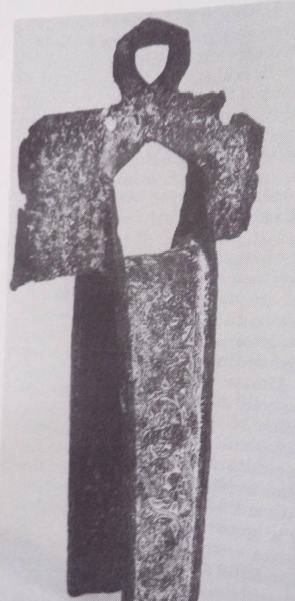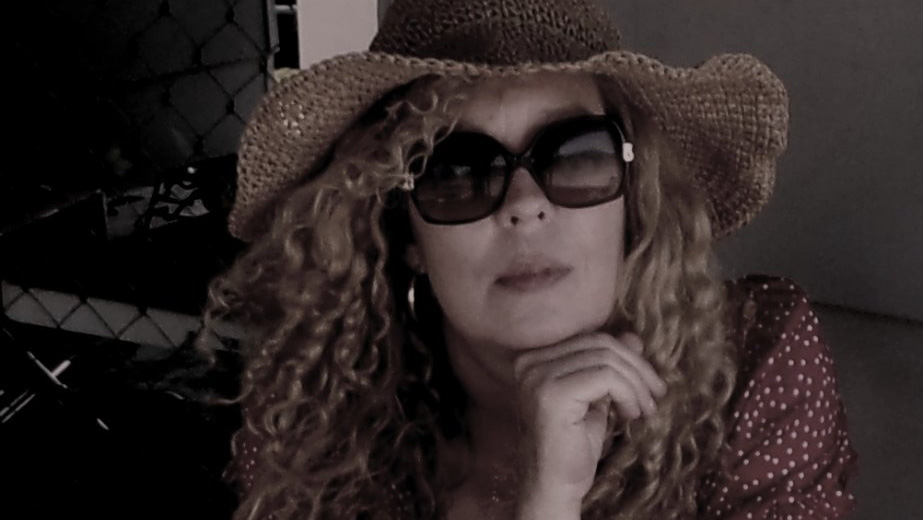
Sometime in 1920, “north of San Saba, near the banks of the Colorado River” (somewhere slightly Southeast of Indian Creek, maybe near Regency Bridge, I am guessing) an iron stirrup of Spanish origin was discovered lying in the grass near the river.The artifact, at least at that date, still bore scroll and flower decorations on its outer side. At one time it was part of a collection of artifacts owned by author and local historian Leona Banister Bruce.
For sure no one will ever know how a Spanish stirrup got to the banks of the Colorado River in our area, but speculation is fun! Bruce begins her speculation with a quote from a researcher of early Spanish occupation in the area, a Dr. Hill who wrote,: “The Coleman and Concho countries, meaning thereby the region of the Colorado drainage south of the Callahan Divide and between the east breaks of the Plains and the Pecan Bayou including Coleman, Runnels, Concho and parts of Tom Green, Brown and other counties was a part of the Spanish province of New Mexico before it was called Texas.” Bruce goes on to propose the idea that the Mendoza Expedition, one of the earliest Spanish reconnoitering and missionary efforts to Texas, might have been responsible for the lost stirrup.
In her book, Santa Anna’s Peak (an incredibly hard book to find nowadays, and for which I owe a debt to Bruce’s granddaughter, Sue Porter of Bangs), Leona Bruce wrote, “It was during the time of the Caddoan occupation that the noted expedition of Mendoza occurred. In 1683, late in the year, a party of Spaniards and Indians set out from the Jumano villages along the Rio Grande ‘to execute the command of the Viceroy of Spain.’
“On March 16 they reached the glorious San Clemente, as they called it, evidently the Colorado below Rockwood […] and here they made camp for six weeks and fulfilled their duties as a missionary expedition to the Indians. This camp was called San Clemente, and it marks the site of the first mission built in Texas.” This mission was located near Ballinger, and there is a historical marker in the area pointing out where it is believed the camp was.
Leona Bruce was deeply intrigued by the idea of the Spanish explorers riding through our area, so intrigued, in fact, that she herself drove to Mexico City to consult the original records of the expedition. This was back in the days when you could jump in a car alone and drive to Mexico, spend a few weeks there searching through old documents and drive back, in perfect safety, but I digress. Mrs. Bruce did not find conclusive evidence for her theory, but she did discover among the papers and artifacts she reviewed a stirrup matching almost exactly the one that was found along the banks of the Colorado. “Among those papers and maps,” wrote Bruce, “is a cruciform iron stirrup, found somewhere along the frontier, of the heavy, elaborately decorated style used by European horsemen in the middle ages and brought to Mexico by the invaders. It happens that exactly such a stirrup is in the private collection of this author.”
Some three hundred years ago did a high-born Spanish conquistador pause on the banks of the Colorado, after a hard crossing and, too tired and wet to notice, lose what then would have been an expensive trinket in the mud along the bank? Maybe he was separated from his group, encountered a band of native warriors intent on mischief, and rode hell for leather through the river, not caring about his fancy stirrup while he fled for his life?
The book does not say who found the stirrup, or what happened to it after that. I imagine it was probably donated to a museum, perhaps Texas Tech University which holds many of Mrs. Bruce’s papers. It would be neat to find out, and to know if anything similar to it was ever found in the area.
***
Diane Adams is a local journalist whose columns and articles appear periodically on BrownwoodNews.com
